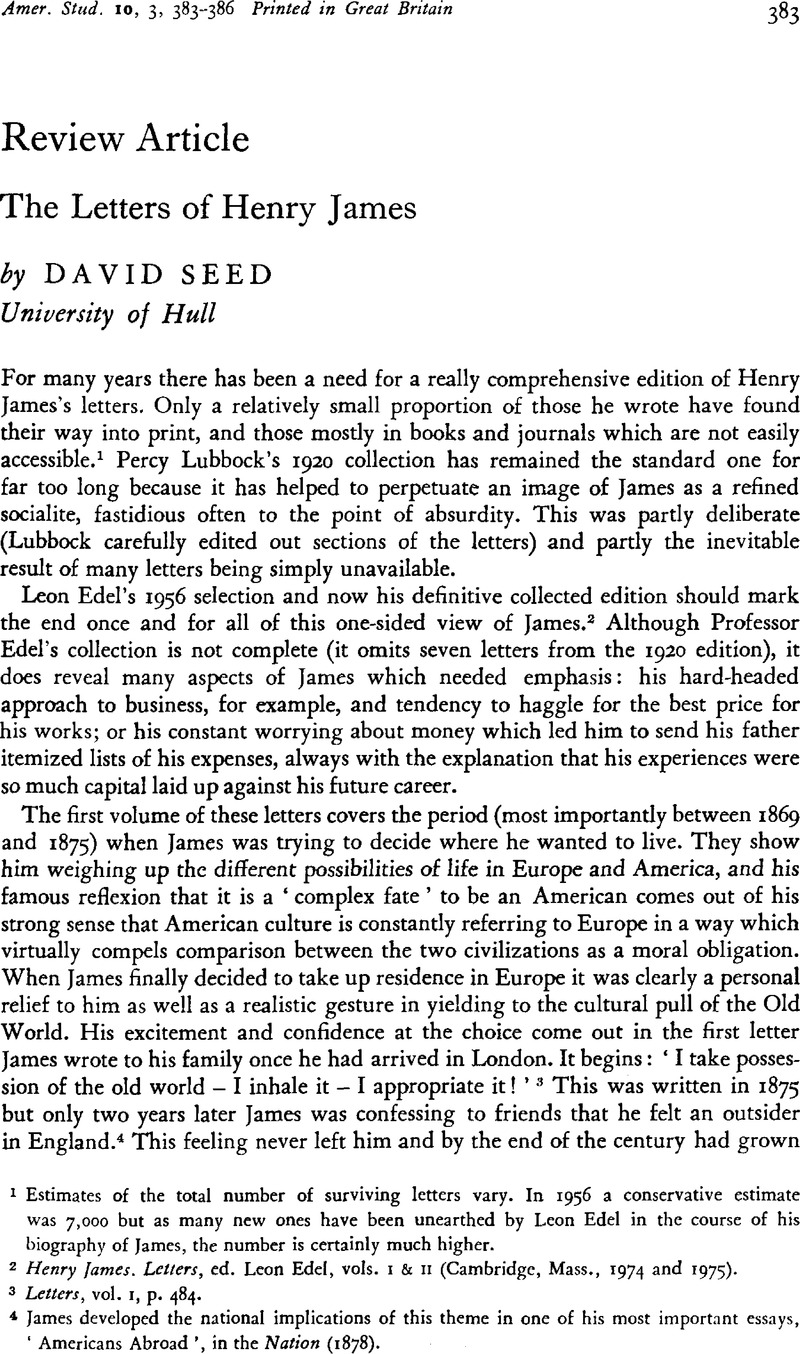No CrossRef data available.
Article contents
The Letters of Henry James
Published online by Cambridge University Press: 16 January 2009
Abstract

- Type
- Review Article
- Information
- Copyright
- Copyright © Cambridge University Press 1976
References
1 Estimates of the total number of surviving letters vary. In 1956 a conservative estimate was 7,000 but as many new ones have been unearthed by Leon Edel in the course of his biography of James, the number is certainly much higher.
2 Henry James. Letters, ed. Edel, Leon, vols. 1 & 11 (Cambridge, Mass., 1974 and 1975)Google Scholar.
3 Letters, vol. 1, p. 484.
4 James developed the national implications of this theme in one of his most important essays, ‘Americans Abroad’, in the Nation (1878)Google Scholar.
5 James used some of the material in his letters in his pieces of journalism. For instance his account of Warwickshire in a letter of 1869 reappeared in the sketch ‘Litchfield and Warwick’ in the Nation (1872)Google Scholar.
6 Letters, vol. 1, pp. 128–9.
7 Letters, vol. 1, p. 160.
8 Fitzpatrick, Kathleen, Henry James and the Influence of Italy (Sydney, 1968)Google Scholar.
9 In a letter of 1880 to W. D. Howells, a rejoinder to the latter's review of Hawthorne: Letters, vol. 11, pp. 266–8.
10 Letters, vol. 1, p. 221 (1870)Google Scholar.
11 Richard Poirier has discussed a similar passage from James's notebooks on the death of his mother in his The Performing Self (London, 1971), pp. 107–11Google Scholar.
12 ‘Your Lone and Loving Exile’, New York Review of Books (23 01 1975), pp. 12–13Google Scholar. A more balanced review which stresses the letters' informational value is Anderson, Quentin's ‘A Master in the Making’, Times Literary Supplement (9 05 1975), pp. 498–499Google Scholar. Anderson uses the letters to take issue with the first volume of Leon Edel's biography.
13 This aspect of the notebooks is discussed in Beach, Joseph Warren's ‘The Witness of the Notebooks’ in Van O'Connor, William ed., Forms of Modern Fiction (Minneapolis, 1948), pp. 46–60Google Scholar. For a contrasting view see Putt, S. Gorley, ‘Henry James, Man and Legend’ in his Scholars of the Heart (London, 1962), pp. 141–235Google Scholar.
14 Letters, vol. 1, p. 301.
15 Letters, vol. 11, p. 232.




